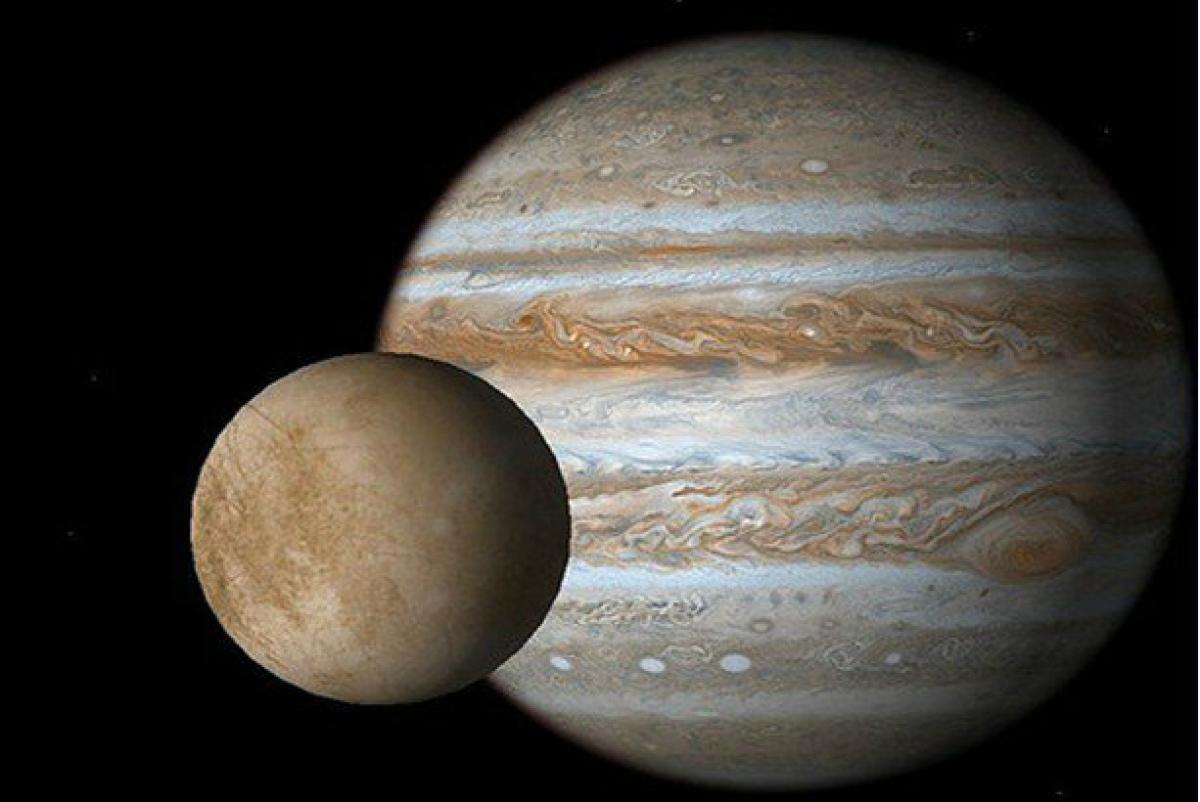Live
- Govt plans to establish offshore Johns Hopkins University Campus in India
- Goa Aces clinch Indian Racing League title
- Study finds how hormone therapy can reshape the skeleton
- High-street fashion players looking at India for manufacturing: Report
- Shreyas Iyer to lead Mumbai as Prithvi Shaw returns for Syed Mushtaq Ali Trophy
- 'Failed to resolve crisis': NPP withdraws support from BJP govt in Manipur
- Chennai: Actress Kasturi Remanded in Custody Until 29th of This Month
- Aaqib Javed likely to become Pakistan's new white-ball head coach
- BJP panel to draft poll charge sheet against AAP govt in Delhi
- Allu Arjun Thanks Fans in Patna, Teases 'Pushpa 2' Release
Just In

After claiming that Jupiter\'s moon Europa has strong evidence for an ocean of liquid water beneath its crust which could host conditions favourable for life, the US space agency is set to announce a \"surprise finding\". At 2 p.m. EDT (11.30 p.m. India time) on Monday, astronomers will present results from a unique Europa observing campaign that resulted in surprising evidence of activity that may
Washington:After claiming that Jupiter's moon Europa has strong evidence for an ocean of liquid water beneath its crust which could host conditions favourable for life, the US space agency is set to announce a "surprise finding".
At 2 p.m. EDT (11.30 p.m. India time) on Monday, astronomers will present results from a unique Europa observing campaign that resulted in surprising evidence of activity that may be related to the presence of a subsurface ocean on Europa.
The announcement will be made in the presence of Paul Hertz, NASA's Director of astrophysics and William Sparks, astronomer with the Space Telescope Science Institute in Baltimore.
After journeying for nearly five years to our solar system's largest planet, NASA's Juno spacecraft has sent back the first images of Jupiter's north pole and the the auroras rippling across its southern pole.
The images were taken during the spacecraft's first flyby of the planet with its instruments switched on.
Juno successfully executed the first of 36 orbital flybys on August 27 when the spacecraft came about 4,200 km above Jupiter's swirling clouds.
The images show storm systems and weather activity unlike anything previously seen on any of our solar system's gas-giant planets, NASA said.
"First glimpse of Jupiter's north pole, and it looks like nothing we have seen or imagined before," said Scott Bolton, Principal Investigator of Juno from the Southwest Research Institute in San Antonio.
"It's bluer in colour up there than other parts of the planet, and there are a lot of storms," Bolton noted.
Along with JunoCam snapping pictures during the flyby, all eight of Juno's science instruments were energised and collecting data.
The Jovian Infrared Auroral Mapper (JIRAM), supplied by the Italian Space Agency, acquired some remarkable images of Jupiter at its north and south polar regions in infrared wavelengths.
"JIRAM is getting under Jupiter's skin, giving us our first infrared close-ups of the planet," said Alberto Adriani, JIRAM co-investigator from Istituto di Astrofisica e Planetologia Spaziali, Rome.
"These first infrared views of Jupiter's north and south poles are revealing warm and hot spots that have never been seen before. And while we knew that the first-ever infrared views of Jupiter's south pole could reveal the planet's southern aurora, we were amazed to see it for the first time," Adriani said.
The Juno spacecraft was launched on August 5, 2011 from Cape Canaveral, Florida and arrived at Jupiter on July 4, 2016.
NASA announced last year that it intends to send a robotic spacecraft, equipped with a suite of scientific instruments, to circle Europa in the 2020s.

© 2024 Hyderabad Media House Limited/The Hans India. All rights reserved. Powered by hocalwire.com







